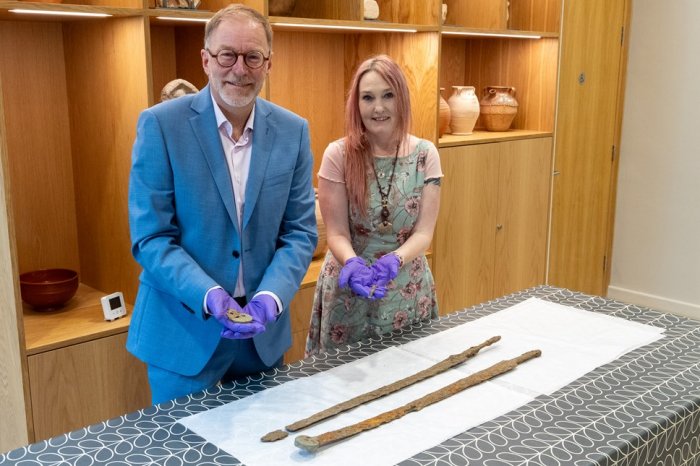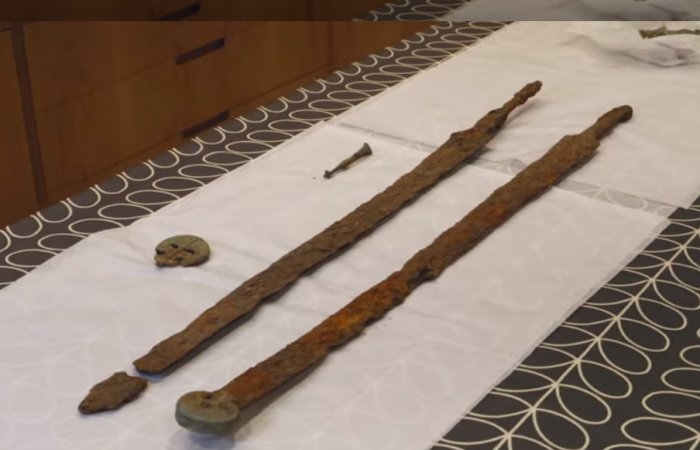Jan Bartek – AncientPages.com – A rare and important find has been unearthed in the Cotswold District. Glenn Manning discovered two Roman cavalry swords, along with remnants of their wooden scabbards and fitments, during a metal detectorist rally in the north of the Cotswolds. There was also a broken copper alloy bowl discovered with the weaponry.
“This new discovery shows what an incredibly deep history the Cotswolds has. People famously asked, ‘What have the Romans ever done for us?’.

Two rare ancient Roman swords have been unearthed in Cotswold. Credit: Cotswold District Council
Well, they have just given us some amazing examples of weapons used almost 2000 years ago when Cirencester was the second biggest town in Britain. This is truly a remarkable archaeological find and I can’t wait for visitors to see them on display in the years to come,” Cllr Paul Hodgkinson, said in a press statement.
The swords were appraised by Professor Simon James from Leicester University who says that these weapons are middle imperial Roman swords commonly referred to as a spatha. They were in use in the Roman world probably by the 160s, through the later second century and far into the third century AD.

Credit: Cotswold District Council
Their considerable length suggests that they are cavalry weapons– or, more accurately, weapons intended for use on horseback. It was not illegal for civilians to own such weapons and to carry them for travelling because Roman provinces were plagued with banditry.
See also: More Archaeology News
Soon after the discovery, Kurt Adams, Finds Liaison Officer, deposited the finds with the Corinium Museum to ensure their preservation.
Historic England is ᴀssisting the museum by arranging for the swords to go for further analysis under x-ray. Archaeological appraisal at the dig site in the north of the Cotswolds may follow to help put the swords into context, as we don’t know why they ended up buried in the Cotswolds.
Written by Jan Bartek – AncientPages.com Staff Writer





